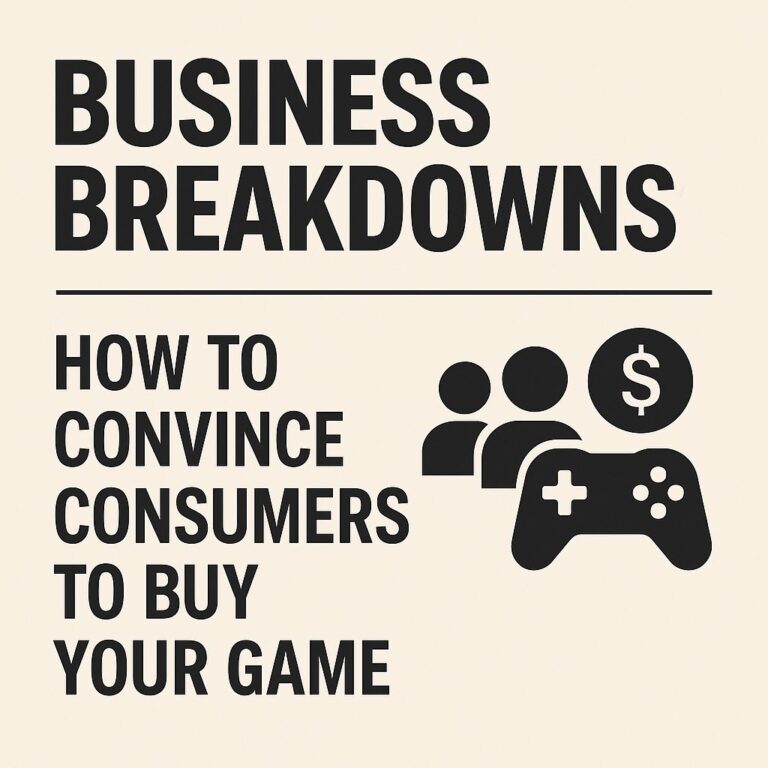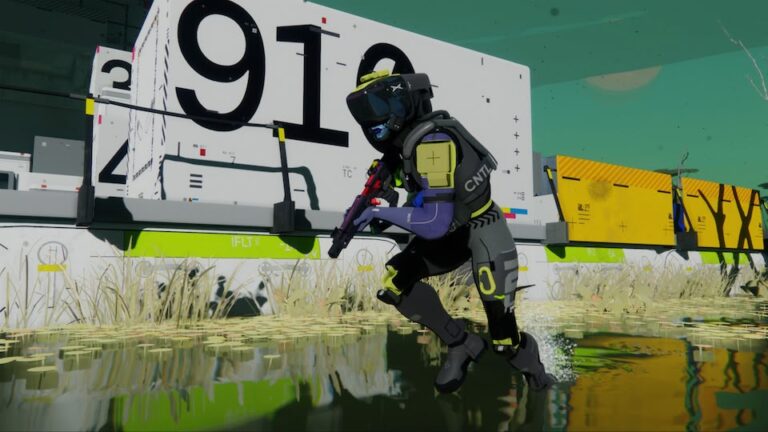When Bungie announced Marathon, expectations were high. The studio behind Halo and Destiny was returning to one of its oldest franchises, now rebuilt as an extraction shooter, a genre still seen as an emerging opportunity in live service.
But just months later, Marathon has gone from ‘one to watch’ to a case study in how not to position a product.
This isn’t a post about mechanics or netcode. It’s about strategy, audience alignment, and the business of perception. If there’s one takeaway from this situation, it’s that even legacy studios can fall into the trap of believing a strong pitch means market fit.
The Pitch Made Sense, But Assumptions Were Never Challenged
The likely internal conversation was simple:
“Every major live service genre already has its king: Fortnite, Call of Duty, Overwatch, EA FC. But extraction shooters? There’s no clear leader. What if Bungie could own that space?”
Pair that with:
- Proven live service experience via Destiny
- Best-in-class shooter mechanics
- Nostalgic IP with cult following
- A bold, recognisable art direction
It’s not hard to see how this pitch sold internally. It’s clean. It’s measurable. It checks boxes.
But strategic clarity doesn’t guarantee product-market fit. And someone in the room needed to ask:
- Why hasn’t any AAA studio succeeded in the extraction shooter genre yet?
- Is there unclaimed demand, or just untapped risk?
- Is gunfeel and art direction enough to define a market segment?
There’s a tendency in games leadership to conflate white space with readiness. The former says, “No one’s doing this yet.” The latter asks, “Is there a reason for that?”
Viral Culture Dictates Perception, Not Feature Sets
Marathon’s downfall wasn’t just due to weak messaging, it was a total vacuum of narrative control.
Hardcore fans set the tone online, whether on Reddit or TikTok. And in 2025, meme culture is more influential than press coverage. One viral insult, ‘Art Raiders‘, can become your brand identity within 24 hours.
Once perception hardens, even good games struggle to recover. We’ve seen this with Hyenas, Redfall, XDefiant. Bungie didn’t learn this lesson. They assumed the product could speak for itself.
In a post-Final Fantasy XIV and No Man’s Sky world, that’s not how trust works anymore.
Bungie’s Goodwill Account Is Overdrawn
It’s critical for business leads to understand: Marathon isn’t launching into a neutral environment. It’s launching from a studio already suffering from goodwill erosion.
Among Destiny players, trust in Bungie’s leadership is at an all-time low. Common community sentiment reflects:
- Disdain for aggressive monetisation
- Frustration with content vaulting
- Fatigue from recycled systems
This matters. Because Marathon isn’t being judged in isolation, it’s being viewed through the lens of “what’s likely to go wrong again?” And when the studio’s last major product leaves players feeling exploited or fatigued, new IPs inherit that baggage.
Marathon Repeats the Mistakes of Recent Failures
There’s an alarming pattern developing among AAA studios:
| Recent Live Service Title | Core Issues |
|---|---|
| Concord | Confusing tone, lack of USP, $40 price tag in F2P-heavy genre |
| Hyenas | Bland identity, unclear value prop, no hook |
| XDefiant | Marketed as a product, not a community experience |
| Marathon | TBD, but currently: weak messaging, no player buy-in, and serious brand confusion |
What do they all have in common? They’re ‘safe bets’ on paper, and completely misaligned with audience expectations.
Live service isn’t a genre. It’s a relationship. Studios that launch without clarity on community value will fail, no matter the pedigree.
What Bungie Should Have Done (And Can Still Do)
This is not a lost cause. But it does require fundamental realignment across leadership, product, and marketing.
a) Define the Unique Selling Point
What can only Marathon offer?
It needs to be shareable, visual, immediate. Not “tight gunplay”, that’s expected. What’s the emotional hook? What’s the moment someone records and says “You’ve got to try this”?
Right now, that doesn’t exist.
b) Identify the Player Archetype
Who is this for? Not everyone. Not even most people. Be specific:
- Ex-Destiny raiders who want more challenge?
- PvEvP fans burnt out on Tarkov realism?
- Players who value sci-fi lore over progression grinds?
You can’t win over the internet, but you can win a tribe.
c) Reclaim the Narrative
Control the conversation, or Reddit and TikTok will do it for you.
- Preempt monetisation backlash with transparent blogs
- Own design decisions openly
- Highlight voices inside the studio that represent the audience
d) Rethink the Pricing Model
Live service games launch under a microscope. Bungie choosing a $40 price point, when Overwatch 2 and even Destiny 2 are free, creates unnecessary friction.
This isn’t about value. It’s about risk. Players don’t want to pay to find out if your game is worth playing. Especially not from a studio they already distrust.
The alpha didn’t inspire confidence. So don’t double down, but adapt.
On the Art Theft Controversy, A Chance to Show Leadership
The discovery that Marathon’s promotional material may have used ANTIREAL’s work When it emerged that Marathon’s promotional assets included work from graphic designer ANTIREAL without permission, Bungie did respond. But the problem wasn’t just the incident, it was the handling of it.
Here’s the official statement:
“An artist who worked on Marathon took elements from a graphic designer without permission or acknowledgement and placed them on a decal sheet that was then checked in in 2020. It included icons and elements that ended up in our alpha build and there’s absolutely no excuse for this oversight and we are working on our review process to ensure incidents like this don’t happen again. We’ve reached out to ANTIREAL and followed up to ensure we’re doing right by this artist and we’re committed to removing anything that is questionably or inappropriately sourced.”
On paper, it hits the right buzzwords: oversight, review process, doing right by the artist. But for a brand already in the midst of a perception crisis, this wasn’t enough.
What should have been a moment of transparency and trust-building instead left ambiguity, which fans quickly filled with frustration and speculation. It read more like a PR firewall than genuine accountability, and crucially, this isn’t the first time Bungie has faced this kind of allegation.
There’s now a visible pattern of questionable IP handling:
- In 2021, fanart was used in a Destiny expansion trailer without credit.
- In 2023, another trailer featured uncredited fanart again.
- A Nerf-branded replica of the Destiny weapon Gjallarhorn included ornamental designs strikingly similar to a fan-created variant.
- And most recently, Bungie is facing a lawsuit accusing it of plagiarising story elements from a sci-fi narrative published on WordPress between 2013 and 2014.
Individually, each of these incidents might be dismissed as a mistake or oversight. But collectively, they suggest a systemic issue with content sourcing, attribution, and leadership accountability. That’s especially concerning for a studio so deeply embedded in live service models, where player trust is the most valuable, and fragile, asset you have.
At this point, the solution isn’t just a review process. It’s a cultural reset around asset approval, creative sourcing, and how Bungie communicates with the community.
Here’s what leadership messaging could have looked like:
“During early pre-production, reference materials, including works from ANTIREAL, were improperly incorporated into production assets. This is not the fault of a single artist. It reflects a failure in our pipeline, and in our leadership. We’re auditing all visual assets across Marathon and Destiny, removing anything improperly sourced, and overhauling our approval and attribution workflows. We’ve offered formal restitution to ANTIREAL and invited them to collaborate on new materials. We’ll share more in a public blog breaking down the changes we’re making.”
This type of response:
- Names the mistake clearly
- Accepts accountability at the leadership level
- Communicates corrective actions
- Removes ambiguity that leads to internet speculation
If the goal is to regain trust, not just for Marathon, but for Bungie’s long-term creative reputation, these moments must be met with clarity and maturity. Anything less just adds fuel to the fire.
The Strategic Lesson
Marathon is a case study in overconfident alignment between internal pitch and external appeal. It assumes a market gap equals a market demand. It leverages studio legacy without addressing legacy trust issues. And it banks on “just enough uniqueness” when today’s players are demanding clarity, honesty, and value.
The good news? None of these failures are mechanical. They’re strategic. That means they’re fixable, if leadership is willing to course correct.
The question now isn’t whether the game works.
It’s whether Bungie, as a business, is still willing to listen.


